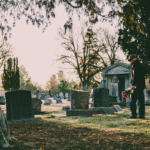In today’s world, building a fitness brand online can open doors to a wider audience and more opportunities than ever before. Using online platforms, anyone can share their knowledge, connect with fitness followers, and grow a unique brand identity that stands out. Simple steps like creating engaging content, being active on social media, and using video-sharing sites can make a big difference in reaching new people.
Choosing the right platform is just as important as the message itself. Sites such as Perspire.tv let fitness creators host live and recorded classes, giving them more ways to interact with viewers. These digital tools help trainers and coaches build stronger relationships with their audience and get noticed in a busy online world.
Consistency is key for anyone trying to grow their brand. Posting regularly, sharing real stories, and being easy to reach keep people interested and coming back for more. This approach helps fitness professionals become known and trusted by those looking for support and motivation.
Establishing Your Fitness Brand on Online Platforms
Building a fitness brand online is about standing out and reaching the right audience. The process involves understanding what makes a brand unique, picking suitable platforms, and communicating clearly and consistently.
Defining Your Unique Value Proposition
A unique value proposition is the main reason people would choose a fitness brand over others. It should reflect core strengths, such as a special training style, a focus on certain age groups, or expert knowledge in specific areas.
For example, a coach might specialize in helping beginners lose weight at home. Another trainer could focus on athletic performance for teens. When the unique value is clear, it helps attract the right audience.
To identify this, write a list of what the brand does differently. This list might include personalized workout plans, accessible video content, or an approach that uses less equipment. Use feedback from past clients to highlight what they liked best.
Choosing the Right Online Platforms
Different social sites and apps appeal to different groups. For visual content, photo and video sharing apps work well. Text-based platforms are good for detailed articles or conversations.
The best platforms are the ones where the target audience spends their time. Younger people may prefer short videos, while older clients might look for livestream classes or resources they can read.
It sometimes makes sense to use more than one platform, but starting with one or two is best. This helps keep the workload manageable and makes the content more focused. Start small, track what works, and adjust as needed.
Creating Consistent Brand Messaging
Brand messaging includes the tone, color scheme, and topics covered in every post or video. It should always match what the brand stands for. For example, a supportive, friendly trainer should use encouraging language and uplifting visuals.
Use the same logo, brand name, and hashtags to make everything easy to recognize. Posts, videos, and stories should all reflect the brand’s values and goals.
Make a simple style guide with elements like main colors, preferred words, types of photos, and common phrases. Refer to this guide when creating new content to keep everything looking and sounding the same.
Growing and Engaging Your Audience Digitally
A fitness brand can reach more people and increase loyalty by sharing quality information, using modern tools, and working with trusted voices in the industry. Each method helps make the brand more visible and keeps followers coming back.
Developing High-Quality Fitness Content
Fitness brands need to offer content that teaches, inspires, and supports their audience. Short videos, photo guides, and easy-to-read blogs work well on many digital platforms. These formats help people learn proper exercise techniques, healthy habits, and common mistakes to avoid.
Tip sheets and workout calendars are useful for keeping followers motivated. Clear visuals and step-by-step instructions make ideas easy to understand. Stories from real-life users also add value and build trust, especially when they show personal progress.
Posting tips about nutrition, recovery, and equipment is a good way to answer common questions. Invite feedback by asking what topics people want to learn more about. This helps the content stay interesting and useful to the audience.
Leveraging Social Media Engagement Tools
Comment sections, live chats, and story polls are powerful online tools for starting conversations. They help brands get direct feedback from followers and respond quickly to concerns or trends.
Interactive features like question boxes, surveys, and challenges create a friendly space for people to share their thoughts. Regular Q&A sessions can address popular topics and correct misunderstandings. Hosting live workouts or educational streams lets viewers ask questions in real time.
Contests and giveaways are also effective in building excitement and rewarding active members. Scheduling posts during peak hours increases visibility and the chance for new people to join in. Social media algorithms often reward frequent interactions and active communities with more reach.
Collaborating With Influencers and Industry Leaders
Working with respected trainers, athletes, or coaches helps a brand reach new groups of people. These partnerships bring expertise and trust to the digital community.
Inviting guests for online workouts, interviews, or social media takeovers can lead to new and interesting content. Collaborative challenges, reviews, and testimonials offer social proof that builds credibility for the brand.
Brands can look for partners whose values and audience match their own. It is helpful to make agreements clear so each side benefits fairly. Partnerships done well often lead to lasting growth and new opportunities for everyone involved.
Conclusion
Building a fitness brand online takes careful planning and steady action.
Standing out means having a strong identity, clear messages, and positive interactions with followers.
Using social media, websites, and creative content helps reach new people and grow a loyal audience.
Staying consistent helps build trust and keeps the brand memorable.






